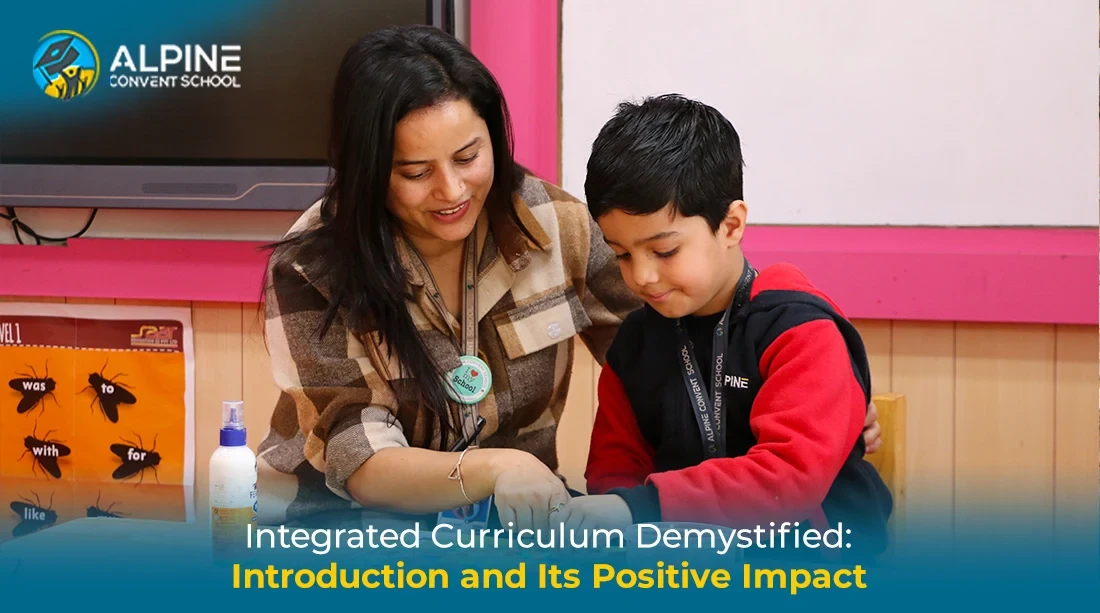
17 August, 2022
Keyboarding is certainly the trend, but handwriting is what sparks brain development in young learners. Are you familiar? Touching a screen or typing on a keyboard is hardly efficient in grooming students with necessary learning skills. Scribing letters and words by hand, on the contrary, engages the brain quite actively. It improves memory and powers up cognitive ability in students. What’s more? Practising handwriting enables students to learn better and harness their creative skills. Hence, at Alpine Convent School, one of the best schools in Gurgaon, preaching the significance of handwriting to young scholars is inevitable.
Describing “handwriting” as a complex but quintessential skill is more appropriate. Little did you know that honing your penmanship skills necessitates the use of concentration, fine motor skills, language, and memory.Keeping the child engaged and motivating the little one to practise writing day in day out matters big. At Alpine, the best convent school in Gurugram, mentors greatly focus on showing children the ropes of rehearsing writing skills.
It is no secret that a child does not get the hang of the alphabet or words right at the start. A young learner kicks off the process by scribbling first, then drawing, and gradually working around letters. Training the little one to practise learning alphabets and words right away could bore the young one. To keep the child’s fleeting interest on a roll, encourage the young mind to draw and scribble their hearts out. In a top CBSE school in Gurgaon like Alpine Convent, students are slowly and engagingly introduced to the formal drills of writing.
A tip to keep in mind: Never coerce a young child to practise right-handed writing only. While most children are naturally inclined towards writing and drawing using their right hand, some might choose to use their left hand too. That’s OK! Do not push the little one to swap hands.
What are the perks of polishing handwriting skills in young learners?
How often have you heard that learning letters becomes easy-peasy for a young gun who rehearses putting pencil to paper every day? Well, it is true! Wondering how writing benefits? Let’s take a quick look at the benefits:
Did you know that writing directs a learner to enjoy sharp focus on a certain subject? Concentration does not come easily to young learners. Practising and mastering the skills of writing empowers students to focus better. At Alpine, an international school in Gurugram, upskilling young learners with effective writing skills is pivotal.
Manuscript or cursive – which style works better for kids?
Although manuscript or print style writing was first introduced, cursive style writing is the preferred style. Children mostly find the style easy to master. Plus, students coping with learning disabilities like dyslexia struggle to write in print. Cursive, on the other hand, reduces dyslexic shortcomings and instils confidence in young learners.
Alpine, the top school in Gurugram, reinforces the fact that classic writing skills are a key part of any good curriculum, regardless of a technology-driven world. Encouraging children to hone the drill of cursive writing comes in handy in ample ways.
Tips to fine-tune a child’s handwriting
Are you of the idea that handwriting is solely about holding a pencil and scribing on a piece of paper? Wrong! Rehearsing writing is a multi-tasking affair. Right from the mind prompting the little ones about shapes and forms, to hand movements, focus, and more, the skill demands a lot. Wondering how to sharpen the handwriting skills of young ones? Keep reading:
Good and the right tools are a must
Children love scribbling using crayons and colourful sketch pens. However, always keep in mind that a pencil is the right tool to practise writing. Choose to introduce kids to smaller and shorter pencils first. Also, the lead in the pencil is pivotal.
Handwriting should be a fun drill
Young children get bored quicker than you think. Do not simply hand out a string of words or letters for the student to copy. Make the drill a fun and exciting affair instead. Introduce drawing, puzzles, and games to practise. It inspires children to brainstorm ideas, analyse patterns, and get creative.
Highlight and fix the problems
The best convent school in Gurugram advocates teaching children the right way to hold a pencil and control the paper. Some of the most commonly observed issues in handwriting include the formation of letters, space between words, size, line-alignment, etc. Practising writing every day helps children eliminate problems and achieve perfection.
Handwriting exposes young scholars to a world of benefits. Encourage students to harness the skill for a promising experience.





Get first-hand information on the top school in Gurgaon - Alpine Convent